Disclosure: This article contains affiliate links. We may earn a commission from purchases at no extra cost to you, which helps our travel content.
The humid evening air carries a symphony of sizzling oil, fragrant spices, and the animated chatter of vendors calling out to passersby. As I weave through the labyrinth of Kaohsiung's night markets, my journalist's notebook in one hand and a bubble tea in the other, I'm reminded why Taiwan's second-largest city remains one of Asia's most underrated culinary destinations. Having explored food scenes from Kyoto to Krakow, I can confidently say that Kaohsiung's night markets offer some of the most accessible, authentic, and downright delicious street food experiences in Asia—all without breaking your budget.
Navigating Kaohsiung's Night Market Scene
Kaohsiung boasts several night markets, each with its own character and specialties. Liuhe Night Market remains the most famous, but locals often direct me to Ruifeng Night Market for its expansive food selection and authenticity. Jinzuan Night Market offers a more intimate experience, while Kaisyuan Night Market combines shopping with culinary exploration.
During my recent three-day food exploration, I discovered that timing is everything. Arriving around 6:30 PM lets you witness vendors setting up while avoiding the peak crowds that form after 8 PM. Most markets operate until midnight or later, with the energy shifting throughout the evening.
As someone who's navigated night markets across Asia for over a decade, I've learned to come prepared. My crossbody bag keeps my essentials secure while leaving both hands free for the important business of eating. Small bills are essential, as most vendors don't accept cards, and having your own reusable chopsticks reduces waste while earning appreciative nods from environmentally-conscious vendors.
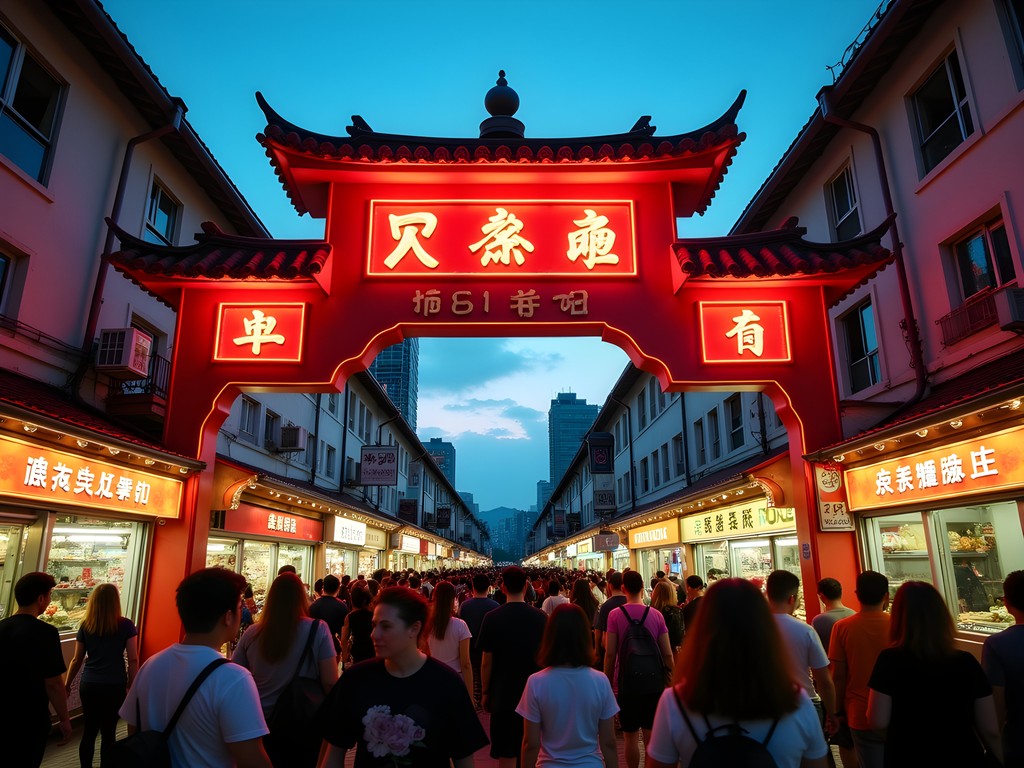
💡 Pro Tips
- Visit between 6:30-7:30 PM to avoid the heaviest crowds
- Bring small bills (NT$50 and NT$100) as most vendors don't accept cards
- Learn the phrase 'bù là' (not spicy) if you have a low spice tolerance
The Essential Kaohsiung Street Food Bucket List
After methodically eating my way through Kaohsiung's markets over several visits, I've compiled what I consider the definitive list of must-try specialties. These aren't just tourist favorites—they're the dishes that locals line up for, the ones with histories intertwined with the city itself.
1. Papaya Milk (木瓜牛奶) My first stop is always for this refreshing beverage. The combination of fresh papaya blended with cold milk creates a silky, sweet concoction that perfectly balances Taiwan's tropical climate. The best vendors use locally grown papayas at peak ripeness.
2. Stinky Tofu (臭豆腐) Despite its intimidating aroma, properly prepared stinky tofu reveals complex flavors that have made it a Taiwanese institution. The deep-fried variety served with pickled vegetables and chili sauce at Ruifeng Night Market converted me from skeptic to devotee.
3. Coffin Bread (棺材板) This Tainan specialty has found a happy home in Kaohsiung. Thick toast is hollowed out, fried, and filled with a creamy seafood or chicken chowder. It's comfort food with a theatrical presentation.
4. Oyster Omelet (蚵仔煎) Fresh oysters folded into a savory egg batter with sweet potato starch for chewiness, topped with a tangy sauce. The textural contrast makes this dish unforgettable.
5. Taiwanese Fried Chicken (鹹酥雞) Not your standard fried chicken—these bite-sized morsels are marinated in a five-spice blend, dusted with sweet potato flour, and fried to perfection. Look for vendors who fry to order.

💡 Pro Tips
- Follow the longest lines—locals know where the best food is
- Ask for 'wēi là' (mild spice) if you want to experience the flavors without overwhelming heat
- Most vendors specialize in just one or two items—that specialization often means mastery
Hidden Gems and Local Favorites
Beyond the well-known classics lie dishes that rarely make it into English-language guidebooks but are beloved by Kaohsiung locals. These are the foods I discovered only after multiple visits and conversations with vendors who recognized my genuine interest in their culinary heritage.
6. Bubble Tea (珍珠奶茶) While bubble tea has conquered the world, drinking it at its birthplace offers an entirely different experience. Skip the chains and seek out small family operations that still cook their tapioca pearls in brown sugar syrup for hours. My favorite spot in Kaisyuan Night Market uses milk from a local dairy that elevates the drink to artisanal status.
7. Pepper Buns (胡椒餅) These baked buns filled with juicy pork, green onions, and a generous dose of black pepper are cooked in clay ovens similar to tandoors. The vendor at Liuhe who's been making them for over 30 years has hands permanently stained from decades of handling dough.
8. Grilled Milk (烤牛奶) Perhaps the most unusual treat I've encountered—milk that's been solidified, cut into blocks, and grilled on skewers. The caramelization creates a delicate crust while the interior remains creamy.
9. Taiwanese Meatballs (肉圓) Unlike Italian meatballs, these are gelatinous tapioca dough filled with braised pork and bamboo shoots, steamed then doused in sweet and savory sauces.
10. Aiyu Jelly (愛玉) Made from the seeds of a fig variety, this refreshing dessert has a subtle flavor and wobbly texture. Served with lemon juice and honey, it's the perfect palate cleanser after a night of intensive eating.
Documenting these culinary adventures requires stamina and the right gear. My pocket translator has been invaluable for deciphering menus and chatting with vendors about their cooking techniques. For night photography in dimly lit markets, I rely on my phone gimbal to capture steady food shots without disrupting the authentic market atmosphere.
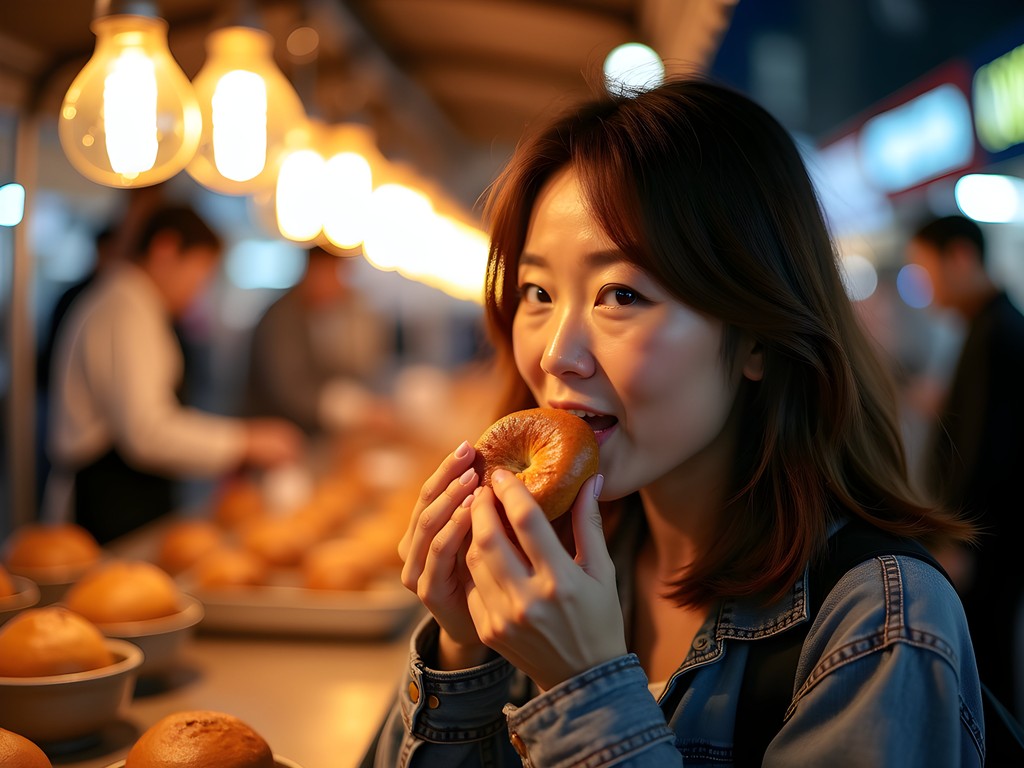
💡 Pro Tips
- Ask vendors 'nǐ tuī jiàn shén me?' (what do you recommend?) to get their specialty
- Look for multi-generational family businesses—they've refined their recipes over decades
- Bring a collapsible food container for leftovers or when you want to try more than you can eat in one sitting
Navigating Dietary Restrictions and Food Safety
Traveling with dietary restrictions through night markets can be challenging but not impossible. As someone who developed a mild shellfish allergy in my thirties, I've learned to navigate Taiwan's seafood-heavy cuisine with care while still embracing the culture.
Vegetarians will find unexpected allies in Buddhist-influenced stalls, often marked with a swastika-like symbol (卍) that indicates vegetarian food. These vendors create remarkable meat-free versions of classic dishes using mushrooms, tofu, and seitan. My vegetarian friend was amazed by the meatless 'duck' at Ruifeng Night Market.
For those with celiac disease, Taiwan can be tricky as soy sauce (containing wheat) is ubiquitous. I've found success carrying picture cards in Mandarin explaining specific allergies. Most vendors are accommodating once they understand your needs.
Regarding food safety, I've eaten at countless street stalls across Asia and follow one simple rule: observe how locals interact with the vendor. Long lines of Taiwanese customers, especially elderly people or families with children, generally indicate both quality and safety.
Staying hydrated is essential during your food adventure, especially in Taiwan's humidity. I never leave my hotel without my filtered water bottle, which allows me to safely refill at public water sources and reduce plastic waste. For sensitive stomachs, I recommend carrying digestive enzymes to help process the variety of new foods you'll be trying.

💡 Pro Tips
- Learn the Mandarin phrases for your specific dietary restrictions
- Look for stalls with high turnover—food doesn't sit around long enough to become problematic
- When in doubt about ingredients, use Google Lens to translate menu boards instantly
Beyond Eating: The Cultural Experience of Night Markets
Night markets in Kaohsiung aren't merely food destinations—they're living museums of Taiwanese culture where centuries-old culinary traditions adapt to contemporary tastes. As a journalist who's documented cultural preservation across Asia, I find Taiwan's night markets to be remarkable examples of heritage maintained through everyday practice rather than formal conservation.
Between bites, take time to observe the craftsmanship on display. Many vendors have inherited their stalls from parents or grandparents, along with closely guarded family recipes. The pepper bun maker at Liuhe Night Market showed me photos of three generations working at the same clay oven.
The markets also offer windows into Taiwanese social life. Extended families gather around plastic tables, colleagues unwind after work over shared plates, and teenagers navigate early dates amidst the market's forgiving hustle. These social dynamics reveal as much about contemporary Taiwan as any museum exhibit could.
For the culturally curious, night markets offer opportunities to witness folk beliefs in practice. Many vendors make small offerings to folk deities at tiny shrines tucked beside their stalls. During Ghost Month (usually August), you might notice additional offerings left for wandering spirits.
To fully document these cultural experiences, I use a compact audio recorder to capture the market's soundscape and vendor stories when they're willing to share. The audio brings my written notes to life when I'm crafting articles back home.

💡 Pro Tips
- Spend time observing the techniques used by vendors—many are preserving disappearing culinary arts
- Visit the same market on different days of the week to experience how the atmosphere changes
- Look for small shrines near stalls to understand how spiritual practices integrate with daily commerce
Final Thoughts
As I sip the last of my papaya milk and tuck my notebook away for the evening, I'm reminded why Kaohsiung's night markets continue to draw me back year after year. Beyond the undeniable deliciousness of the food, there's something profound about participating in a tradition that connects modern Taiwan with its complex cultural heritage.
These markets represent the democratization of cuisine—where a few dollars grants access to dishes refined over generations, where a solo traveler can experience the full spectrum of local flavors without reservation anxiety or language barriers. For budget-conscious explorers seeking authentic cultural experiences, Kaohsiung's night markets offer unparalleled value.
Whether you're a dedicated foodie or simply a curious traveler, I encourage you to approach these markets with an open mind and an empty stomach. Let the aromas guide you, follow the local crowds, and don't hesitate to point and smile when words fail. In the universal language of food, your enthusiasm will translate perfectly.
Until next time, wǎn'ān (goodnight) from Kaohsiung—where the best of Taiwan reveals itself one bite at a time.
✨ Key Takeaways
- Night markets offer the most budget-friendly way to experience authentic Taiwanese cuisine
- Follow local crowds to find the best vendors rather than relying solely on guidebooks
- Look beyond the famous dishes to discover regional specialties unique to Kaohsiung
- Markets are cultural spaces where food connects to broader Taiwanese identity and history
- Come with cash, curiosity, and an empty stomach to make the most of your visit
📋 Practical Information
Best Time to Visit
year-round, though February-April and October-December offer the most comfortable temperatures
Budget Estimate
$10-15 USD for a full evening of sampling multiple dishes
Recommended Duration
2-3 hours per night market
Difficulty Level
Beginner

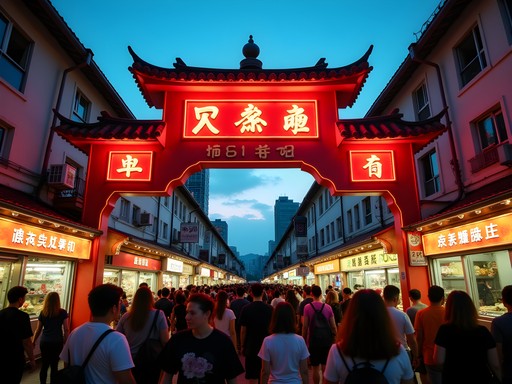
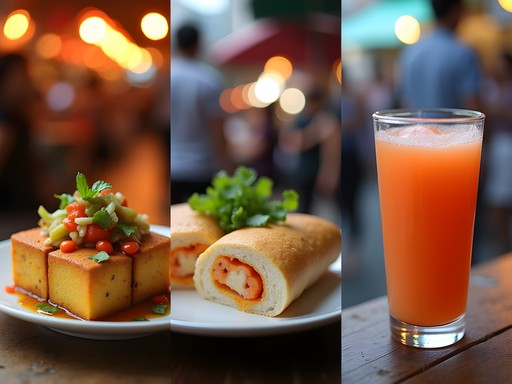
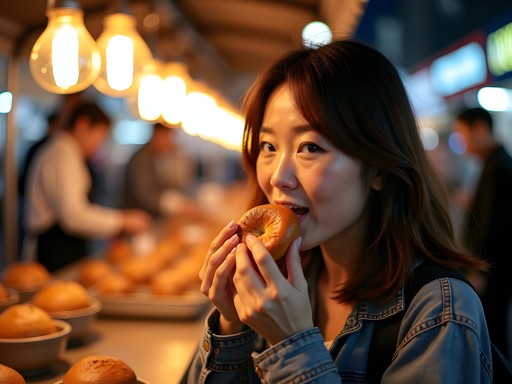
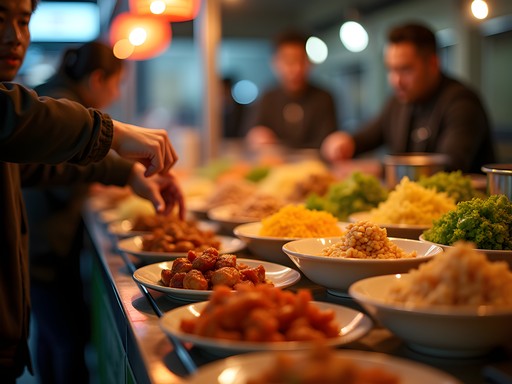
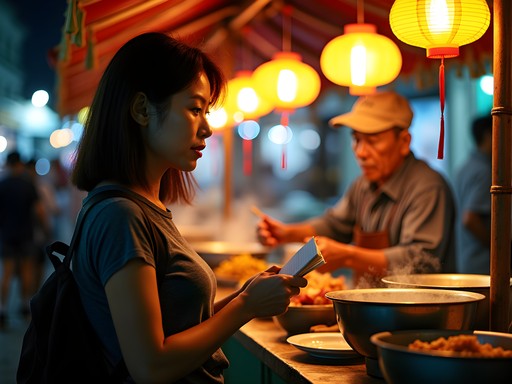







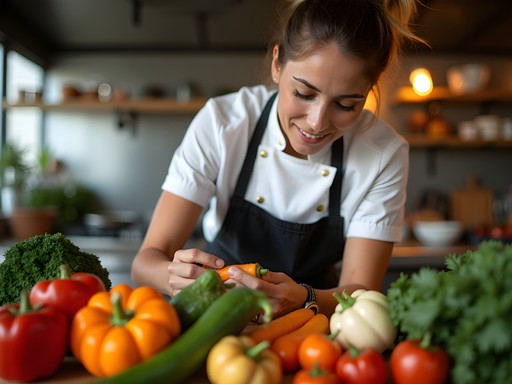

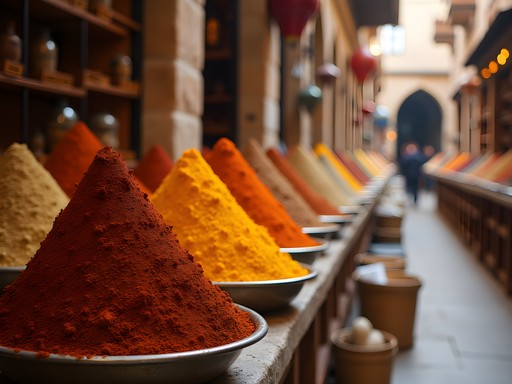
Comments
backpack_bros
Pro tip: hit the night markets around 9pm on weekdays. Still buzzing but way less crowded than weekends. We could actually see the food being made instead of just seeing the backs of people's heads lol
Sakura Washington
Great tip! Totally agree about the timing. Some vendors don't even open until 8pm anyway!
TaiwanExplorer
Just got back from Kaohsiung and used this guide extensively - thank you! The papaya milk at Ruifeng was life-changing. One thing I'd add is that prices have gone up a bit since this was written. Most dishes were 60-80 TWD rather than 40-60 TWD mentioned in the post. Also found an amazing stall selling taro balls in Liuhe that wasn't mentioned - it's about halfway down on the left side with a blue sign. The owner speaks some English and was super friendly! The tip about avoiding 7-9pm peak times was spot on. We went at 9:30pm one night and it was so much more enjoyable.
Sakura Washington
Thanks for the price update - that's really helpful info! And I'll have to check out that taro ball stall next time I'm there. So glad the guide was useful for your trip!
foodie_traveler
Your pepper bun photo is making me hungry! Best thing I ate in Taiwan hands down.
wanderlust_jen
Going to Kaohsiung next month! How vegetarian-friendly are these night markets? Any specific stalls you'd recommend?
Sakura Washington
There are definitely options! Look for 'cong you bing' (scallion pancakes), sweet potato balls, and many of the dessert stalls. At Ruifeng, there's a vendor near the center who specializes in vegetarian versions of traditional dishes - just look for the green signs with 素食 (vegetarian) written on them!
wanderlust_jen
Thanks so much! Those scallion pancakes look amazing in your photos. Can't wait to try them!
FoodiePhotographer
The lighting in your night market shots is incredible! What camera settings did you use to capture the vibrancy without blowing out those neon signs?
Sakura Washington
Thank you! I shoot in manual with slightly underexposed settings and then bring up the shadows in post. For most of these, I was at f/2.8, 1/60s, ISO 1600-2500. The key is balancing the exposure for those bright neon lights!
Sage Dixon
Sakura, your post brought back so many memories of my Kaohsiung adventure last year! That papaya milk at Ruifeng Night Market literally saved me during those humid August nights. One tip for anyone heading there: the MRT system is super convenient for night market hopping, but I found downloading the Kaohsiung Metro app beforehand was a game-changer. Also, for anyone with a sweet tooth, don't miss the wheel cake stands at Liuhe - there's an older gentleman near the eastern entrance who makes them with a taro filling that's absolutely divine. Not on many tourist lists but definitely a local favorite! I used my pocket translator to chat with him about his 30+ years making these treats - such amazing stories!
travelbuddies55
Thanks for the wheel cake tip! Any other hidden gems you discovered?
Sage Dixon
Definitely check out the small seafood stalls on the edges of Kaisyuan Night Market - less crowded than the central areas and the grilled squid there is incredible. Also, there's a tiny bubble tea shop near Exit 2 of Sizihwan MRT that makes a sea salt cheese foam that will change your life!
cityguide
Those stinky tofu pics are making me drool! Definitely adding Liuhe Night Market to my Taiwan itinerary!
Sage Dixon
Stinky tofu is definitely an experience! Just hold your nose for the first bite - I promise it tastes way better than it smells!
cityguide
Haha I've heard that! Did you try the deep-fried version or the stewed one?
Sage Dixon
Both! The deep-fried with that spicy sauce was my favorite though. The crispy outside really balances the funkiness!
TravelWithKids
We're visiting with our 7 and 10 year old next month. Any kid-friendly recommendations? Are the markets too crowded in the evenings?
Sage Dixon
Not Sakura, but I've taken my niece and nephew (similar ages) to these markets. Kids usually love the wheel cakes, candied fruits, and bubble tea! Ruifeng gets super packed after 8pm, but Liuhe is more spacious. Go around 6-7pm when it's less crowded but everything is open.
BackpackBuddy
Pro tip: bring cash! Many smaller stalls don't take cards. And small bills are better - vendors sometimes get annoyed making change for large notes.
Sakura Washington
Great point about the small bills! I should have mentioned that in the post.
starstar
Any recommendations for vegetarians? The food looks amazing but I'm worried about finding options.
freeperson
There's actually tons of vegetarian options! Look for 'su shi' (vegetarian) signs. The taro balls, grilled corn, and sweet potato fries are all safe bets. There's also amazing vegetarian dumplings at most markets!
starstar
That's so helpful, thank you! Feeling much more confident about my trip now.
Venture X
Premium card with 2X miles, $300 travel credit, Priority Pass